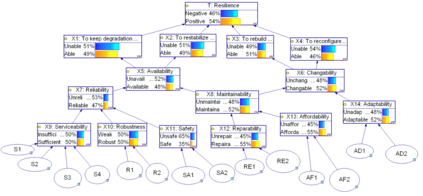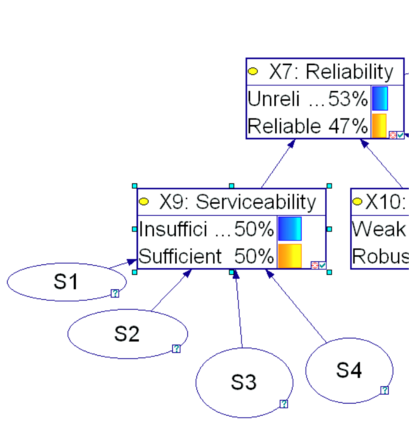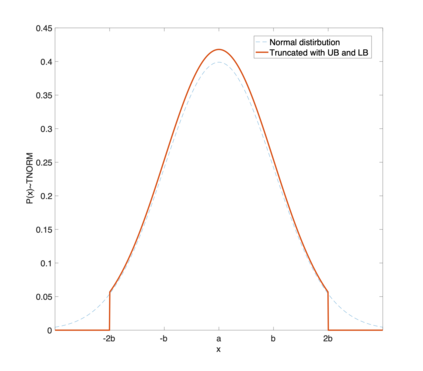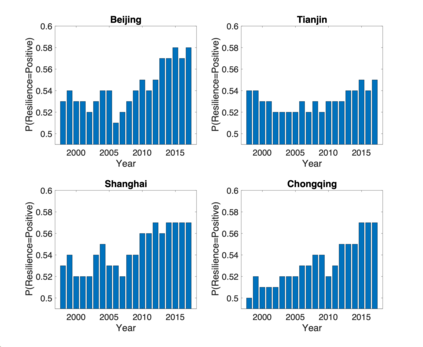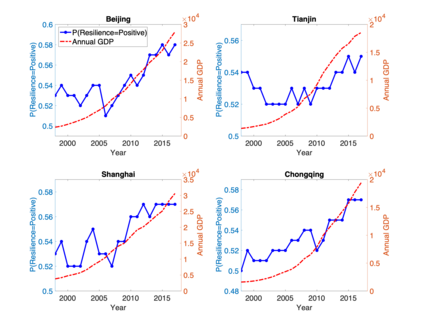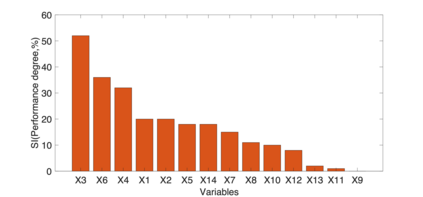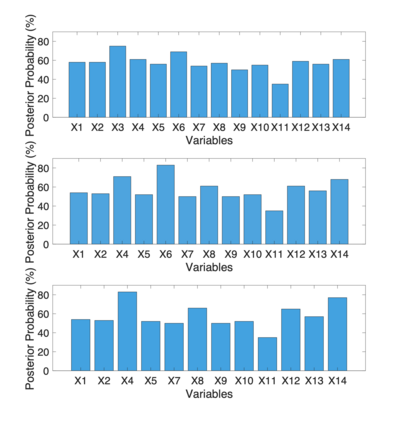This paper proposes a hierarchical Bayesian network model (BNM) to quantitatively evaluate the resilience of urban transportation infrastructure. Based on systemic thinkings and sustainability perspectives, we investigate the long-term resilience of the road transportation systems in four cities of China from 1998 to 2017, namely Beijing, Tianjin, Shanghai, and Chongqing, respectively. The model takes into account the factors involved in stages of design, construction, operation, management, and innovation of urban road transportation, which collected from multi-source data platforms. We test the model with the forward inference, sensitivity analysis, and backward inference. The result shows that the overall resilience of all four cities' transportation infrastructure is within a moderate range with values between 50% to 60%. Although they all have an ever-increasing economic level, Beijing and Tianjin demonstrate a clear "V" shape in the long-term transportation resilience, which indicates a strong multi-dimensional, dynamic, and non-linear characteristic in resilience-economic coupling effect. Additionally, the results obtained from the sensitivity analysis and backward inference suggest that urban decision-makers should pay more attention to the capabilities of quick rebuilding and making changes to cope with future disturbance. As an exploratory study, this study clarifies the concepts of long-term multi-dimensional resilience and specific hazard-related resilience and provides an effective decision-support tool for stakeholders when building sustainable infrastructure.
翻译:本文建议采用贝叶西亚网络模式(BNM)对城市交通基础设施的抗御能力进行定量评估。根据系统性思维和可持续性观点,我们调查1998年至2017年中国四个城市,即北京、天津、上海和重庆,公路运输系统的长期抗御能力,分别在北京、天津、上海和重庆等中国四个城市进行。该模式考虑到多来源数据平台收集的城市公路运输设计、建设、建设、运营、管理和创新等阶段所涉及的因素。我们用前瞻性分析、敏感性分析和后向推论来测试该模式。结果显示,所有四个城市的交通基础设施的总体抗御能力都处于中等范围,其价值在50%至60%之间。尽管这些城市的经济水平都在不断提高,但北京和天津都展示了长期运输抗御力的“V”型特征,表明抵御力经济组合效应具有很强的多维度、动态和非线性特征。此外,从敏感性分析和后向回推推得到的结果表明,城市决策者应当更加关注快速重建的能力和作出长期抵御能力变化的能力,以便进行长期研究。













